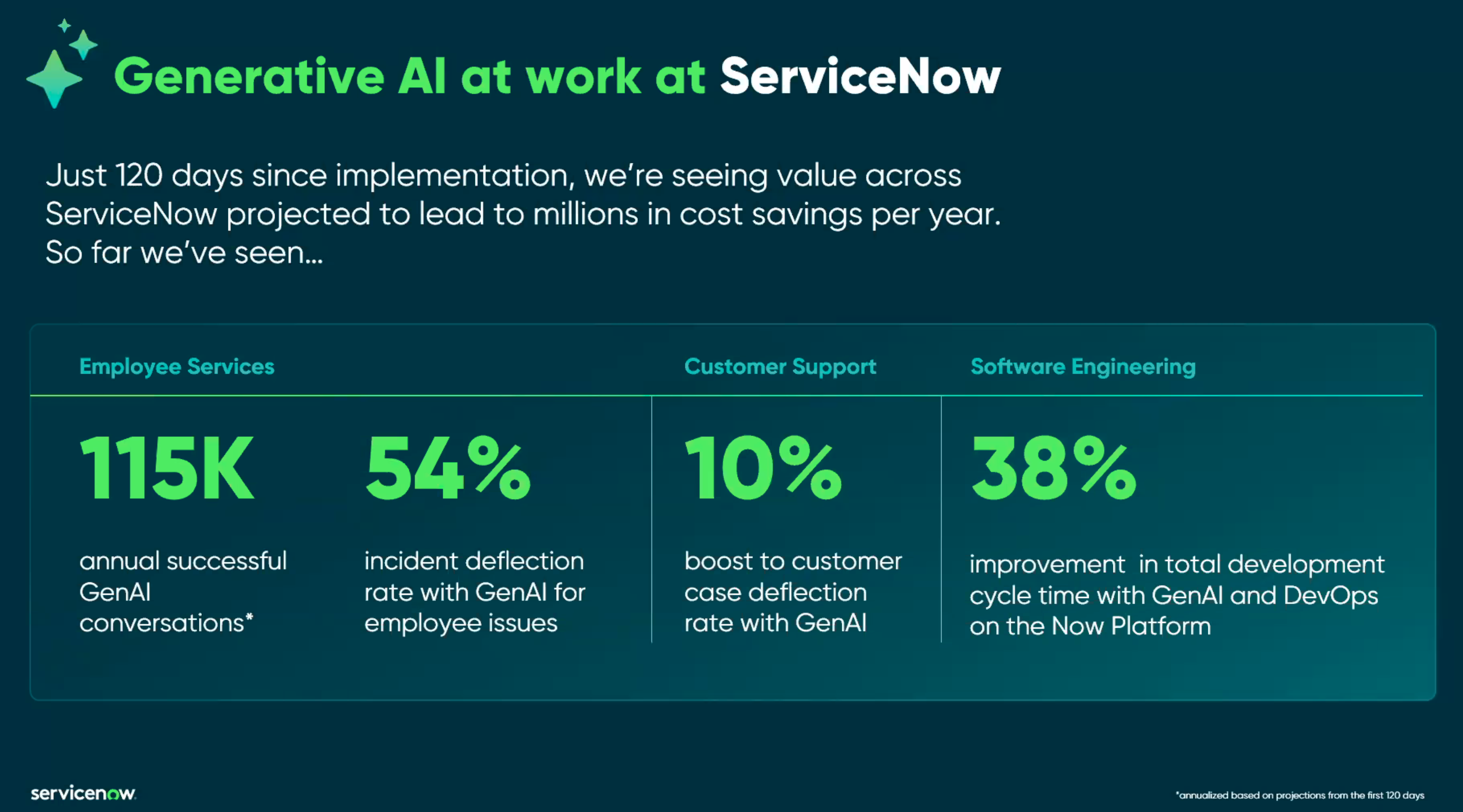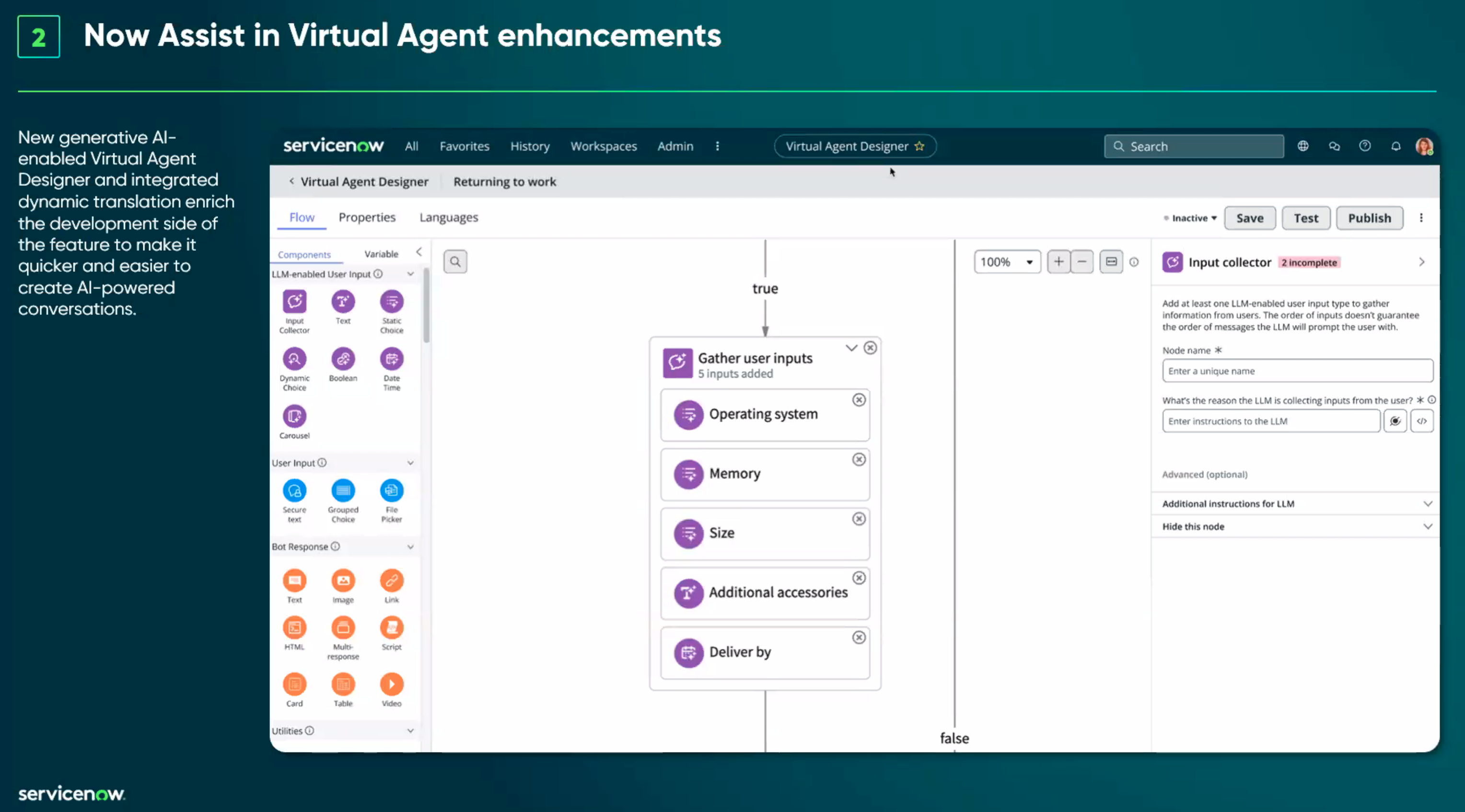Today, ServiceNow announced the new capabilities its Washington, D.C. platform release (ServiceNow names its releases after major cities or states). No Jitter participated in a briefing the week prior which featured an overview of both the new generative AI features and the “transformative” features delivered in the platform.
ServiceNow’s Jon Sigler, senior vice president of Platform, highlighted ServiceNow’s intention to provide its customers with a choice of models, from the purpose-built models it has developed with partners Nvidia and Hugging Face, to the ongoing partnerships it has forged with OpenAI from Microsoft and Google Cloud. “We want our customers to have a choice, whether that’s the general-purpose models out of OpenAI, Google Cloud and Microsoft, our domain specific models or even an LLM created by a customer,” Sigler said.
Sigler also spoke briefly about how ServiceNow currently has more than 20 internal projects that leverage its generative AI (Gen AI) models. As the following slide illustrates, ServiceNow has had more than 115,000 successful Gen AI conversations, which means that a request or issue was resolved through self-service without the need for human intervention. ServiceNow also experienced a 54% deflection rate with the Gen AI tools deployed to help resolve internal employee issues and a 10% boost to its customer case deflection rate.
In both cases, the deflection rate means that after a getting an answer/resolution from Gen AI, the customer didn’t have to reach back out to a human agent for help. These points show ServiceNow “dogfooding” their solutions, but also substantiates the narrative around generative AI-based tools helping organizations effect cost savings and/or performance improvements by streamlining interactions. (See No Jitter’s ongoing Conversations series for more on these topics.)
Virtual Agent Designer
One of the new features announced today was ServiceNow’s Virtual Agent Designer which allows enterprises to create custom chat interactions (e.g., customer service, service delivery) via a drag-and-drop visual designer (see the following graphic). The Gen AI piece allows the chat designer to customize both the questions asked of end users and the answers available to them. So, for example, the Virtual Agent with Gen AI can better parse intent and, because of integration with ServiceNow’s platform, it can be connected with relevant information to provide specific answers.
“With these new tools, we’ve reduced the time it takes to get these new capabilities up and running from weeks or months down to literally hours or minutes,” Sigler said. “And that’s what we're really trying to do – increase productivity, reduce costs for our customers and reduce that time to value.”
Dynamic Translation with Gen AI
ServiceNow has also incorporated Gen AI into its existing Dynamic Translation feature which has been in the platform for years. The product takes the user’s input in whatever language in which the user is communicating, translates that input into English, and then sends that (dynamically translated) English to ServiceNow’s LLMs for processing. Then, using Gen AI, the LLM-generated English answer is then translated back into the language in which the user had made their query. Sigler said that more than 130 languages are currently supported.
This is part of a two-pronged approach to support languages other than English. Sigler said that throughout 2024 ServiceNow’s LLMs will begin supporting different languages.
The challenge here is that most models are trained in English. “It is not trivial to teach them another language. It takes a tremendous amount of data,” Sigler said. “And it turns out that the models don't get smarter as you introduce new languages to them. It's a delicate process to maintain the quality of the large language models in English while adding different languages – which is a high priority for us and why we have this dual approach.”
ServiceNow: Expands Nvidia Partnership and Acquires Connected Worker Solutions
On Monday, March 18, ServiceNow and Nvidia announced an expanded partnership where ServiceNow will use Nvidia NIM to serve its domain specific LLMs that power capabilities within Now LLMs. Nvidia Inference Microservices (NIM) is a “set of optimized cloud-native microservices” which, very simply put, are designed to make it easier and faster to develop AI-powered applications. The linked site contains much more detail.
Additionally, ServiceNow acquired 4Industry, a mobile-enabled connected worker platform that allows “frontline workers to connect and interact with their machines.” ServiceNow also completed its acquisition of Ernst & Young’s (EY’s) Smart Daily Management application, which provides connected digital worker capabilities. Both acquisitions are geared toward workers in the industrial / manufacturing sectors.
Want to know more?
No Jitter spoke with ServiceNow’s Terence Chesire last year about AI, automation and defining business processes. No Jitter also covered ServiceNow’s launch of its Now Assist generative AI-based capabilities.











